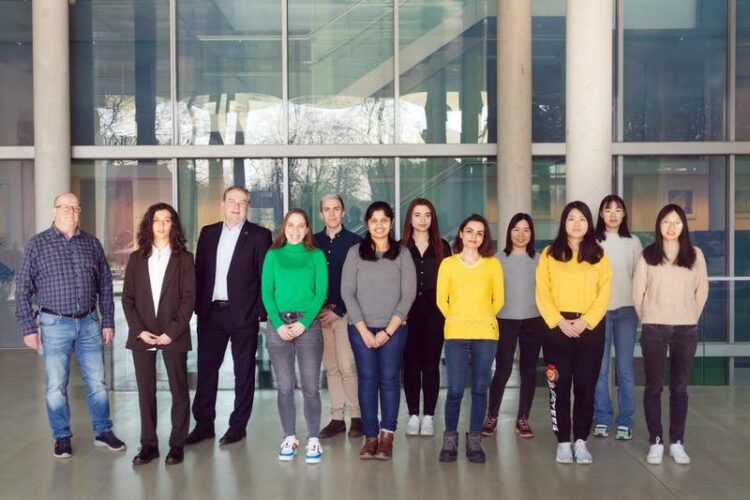New transport pathway for active substances into the cell discovered

Professor Werner Nau's research group at Constructor University discovered a novel method of drug delivery using spherical metal oxide molecules.
(c) Constructor University
One of the major challenges facing cell research is how to target substances to combat diseases. A team from Constructor University, in cooperation with scientists from the University of Vienna, discovered a new, promising method using spherical metal oxide molecules known as polyoxometalates. They report on the results of their research in the journal “Advanced Materials”, one of the most important publication media in chemistry and materials science.
The metal oxide molecules are already known as antitumor, antibacterial, antiviral and anticancer agents. What is new, however, is the discovery that certain variants with two different metals are also able to overcome membrane barriers. Drugs can, thus, reach a cell in a more targeted manner, which can lead to better and more efficient results in the medical and pharmaceutical field.
“The method has a broad application potential,” says first author Dr. Andrea Barba-Bon, who is researching the development of the method at Constructor University as part of Prof. Dr. Werner Nau’s chemistry working group, alongside doctoral student Maryam Ashjari.
The use of inorganic, i.e. non-carbon-based, drug transporters is a recent development that was only introduced last year in a Nature publication. While until recently the application was limited to spherical molecules with the element boron, new avenues are now opening up with metal-containing molecules. “For the first time, this creates possibilities for tailoring the transporters to the active ingredient to be delivered,” said Nau, “because the discovery of the new class means that a broader portfolio of different transporters is now available.”
Wissenschaftliche Ansprechpartner:
Faculty Contact:
Dr. Werner Nau | Provost and Professor of Chemistry
wnau@constructor.university | Tel.: +49 421 200-3233
Originalpublikation:
DOI: 10.1002/adma.202309219
Media Contact
All latest news from the category: Life Sciences and Chemistry
Articles and reports from the Life Sciences and chemistry area deal with applied and basic research into modern biology, chemistry and human medicine.
Valuable information can be found on a range of life sciences fields including bacteriology, biochemistry, bionics, bioinformatics, biophysics, biotechnology, genetics, geobotany, human biology, marine biology, microbiology, molecular biology, cellular biology, zoology, bioinorganic chemistry, microchemistry and environmental chemistry.
Newest articles
Faster, more energy-efficient way to manufacture an industrially important chemical
Zirconium combined with silicon nitride enhances the conversion of propane — present in natural gas — needed to create in-demand plastic, polypropylene. Polypropylene is a common type of plastic found…

Energy planning in Ghana as a role model for the world
Improving the resilience of energy systems in the Global South. What criteria should we use to better plan for resilient energy systems? How do socio-economic, technical and climate change related…

Artificial blood vessels could improve heart bypass outcomes
Artificial blood vessels could improve heart bypass outcomes. 3D-printed blood vessels, which closely mimic the properties of human veins, could transform the treatment of cardiovascular diseases. Strong, flexible, gel-like tubes…




















